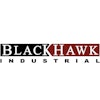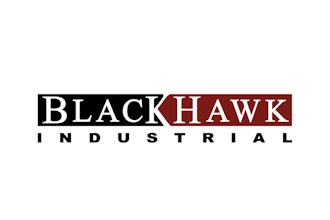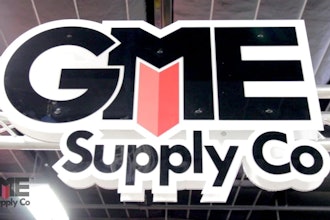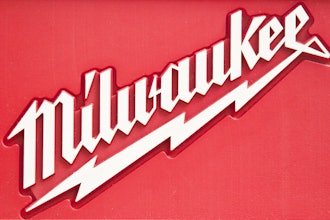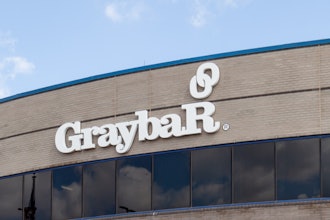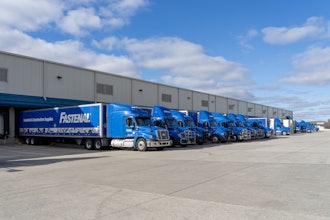
Conexiom
E-Marketplaces —
Friend or Foe?
A closer look at the opportunities that
e-commerce providers present distributors,
and the challenges that come with the online
market platform.
E-Marketplaces — Friend or Foe? 2
Choosing to embrace e-commerce is only the first step for industrial distributors.
The “how” is arguably more important than the “if.” Distributors must ask them-
selves questions including, “How will we present e-commerce to our customers?”
“What platform should we use?” “Should we build our own e-commerce, or use an
e-commerce provider?”
When one thinks of e-commerce, Amazon.com immediately comes to mind. Every
day, more and more businesses join in selling their products on Amazon, using the
e-tailer as their e-commerce provider. Industrial distributors have joined the move-
ment. But many distributors offer e-commerce through a third-party provider, such
as Amazon or other e-marketplaces. The customer market can differ from distributor
to distributor, and their e-commerce must correlate. One distributor’s approach to
an e-commerce provider won’t necessarily be appropriate for another.
Over the past year, Industrial Distribution has conducted research, interviewed industry
experts, and investigated how distributors view e-marketplaces in terms of “friend-or-
foe.” This has been one of our publication’s most popular topics of discussion. As dif-
ferent e-marketplaces provide different opportunities and challenges, the information
Industrial Distribution has gathered can help distributors navigate their approach.
E-commerce in industrial
distribution stopped being
a trend years ago. It’s now
the norm. Many distributors
have been offering their
customers the ability to
buy products online for
at least a decade, having
upgraded their platform
several times. Some were late to the game and have just recently
joined the online business-to-business (B2B) or business-to-consumer
community (B2C). Others are still reluctant to add an e-commerce
element to their business, and some distributors have flatly chosen
not to for one reason or another.
In 2015, Industrial Distribution conducted its 68th Survey of Distributor Operations
— an in-depth report featuring data from its readership. The survey report highlights
critical issues affecting distributors, which provides them data on industry trends.
One of the survey sections focuses on e-commerce usage and provides a look at
how it compares to recent history.
E-Commerce Usage
E-Marketplaces — Friend or Foe? 3
In the 2015 survey, 69% of respondents said e-commerce is a priority for their
business, up 7% from a year earlier. With that, the amount that generated at least
20% of sales from online channels increased from 7.6 to 11%. That still left 31% of
respondents not using e-commerce, but coincidentally, 31% of respondents who
don’t currently use it said they plan to adopt it within the next two years.
In August 2015, Forrester Research forecasted that B2B e-commerce in the U.S. will
exceed $1.1 trillion and comprise 12% of all B2B sales in the country by 2020. Those
figures far exceed the firm’s estimate that 2015 B2B sales in the U.S. would hit $780
billion, or 9.3% of the market.
E-commerce already comprises a large portion of sales for several large industrial
distributors. At MSC Industrial, 57% of total sales were online. At Grainger,
e-commerce accounted for more than 40% of sales in 2015. There’s no doubt that
B2B sales are on the rise, especially among industrial distribution companies.
Most of the industrial distribution marketplace is still comprised of small companies,
many which are family-owned and have a reputation based on customer service
and face-to-face interaction. With smaller distributors there tends to be a fear of
losing personal touch with the customer. Keith Lambert, vice president of marketing
and business development for e-commerce integration provider Kore Technologies,
touched on this in a recent interview with Industrial Distribution.
“They see e-commerce as a threat, when really e-commerce can work as a comple-
ment to brick and mortar,” Lambert says. “The two can bring more traffic to each,
depending on what the customer prefers. This allows them to differentiate from sites
like Amazon that focus more prominently on price. We encourage them to look at
e-commerce as a way of expanding their services via the web and leverage trends
like the growth of mobile device use.”
Build vs. Buy
For industrial distributors, the concept of having a home-grown e-commerce
platform is a wholesome one. Building e-commerce from the ground up offers
more control, and the potential to be cheaper in the long run over outsourcing it to
a third party. In fact, two-thirds of our survey respondents say they built their own
e-commerce system.
But many distributors, especially those on the smaller side, don’t have the resourc-
es, staff, or financial capability to build an online sales platform from scratch. Even if
a distributor can afford to build a platform, Industrial Distribution’s research shows
they may not have the technical capabilities to build an effective platform. After all,
there’s a big difference between just having e-commerce, and having successful
e-commerce.
E-Marketplaces — Friend or Foe? 4
Figure 1:
Cost 27.8%
Matching customer needs 45.4%
Mobile app compatibility 16.5%
Payment process 4.1%
Technology/Functionality Issues 46.4%
Website design 25.8%
Website security 15.5%
Other 5.2%
What are your two biggest concerns for enhancing your e-commerce platform?
When asked what their two biggest concerns are for enhancing their current e-commerce
platform, 46% of survey respondents said ‘Technology/Functionality Issues,’ 45% said
“Matching Customer Needs,” 28% said “Cost,” and 26% said “Website Design.”
Gartner research director Chris Fletcher wrote a blog regarding these issues, “Build vs
Buy in E-Commerce: Is it a lobster trap?” where he likens home-grown e-commerce to a
lobster trap in that once you’re in, it’s hard to get out. Fletcher cautions that companies
struggling to keep pace with innovation, or those that lack the internal technical and
management resources required to build, deploy and support an e-commerce system,
may be better off using a licensed alternative.
Asked what the most difficult part of managing their business’ e-commerce plaform,
Industrial Distribution respondents’ top two answers were technical-issues. Twenty-four
percent chose ‘Making website user-friendly,’ while another 22% said “Aesthetic issues.”
Figure 2:
Aesthetic issues (product descriptions, product images, graphics, logos) 22.1%
Cost 7.1%
Keeping pace with or staying ahead of competitors 18.6%
Legacy issues (ongoing adaptation from brick-and-mortar to online)9.7%
Making website user-friendly 23.9%
Payment process 4.4%
Technical issues 10.6%
Other 3.5%
What is the most difficult part about managing your business’ e-commerce?
E-Marketplaces — Friend or Foe? 5
“Let’s face it, a (distribution) wholesaler’s core business isn’t building e-commerce
platforms, and many may soon come to realize they don’t have the capital, time or
expertise to see the project through properly,” says Unilog president Suchit Bachalli
in a recent article for Industrial Distribution. “Building a homegrown e-commerce
system can be complicated and expensive. Unless you’re staffed with a team full of
developers, programmers and web designers to do the job correctly, it would be a
wise choice to outsource.”
Marketplace Advantages and Challenges
With the need to provide a seamless, fast and easy online buying experience to
the customer as the top priority in B2B e-commerce, the aforementioned technical
challenges can cause headaches for distributors looking to start offering online sales,
or those planning to upgrade their current system. There are numerous resources
available to help distributors with this, in the form of e-commerce vendors.
E-commerce vendors work to take the complexity out of managing e-commerce,
especially when catering to small and mid-sized distributors that don’t have the
in-house capabilities to build their own platform. Providers can serve as an extension
of the company, and lessen the burden of having to tackle the large task of home-
made e-commerce, allowing distributors to stay focused on their core business.
A key feature of e-commerce marketplace providers is that they can often customize
a platform for each distributor. Too often, distributors go too big with their platform
and overwhelm the customer with selection choices.
“It’s about understanding what is best for your company and staying focused on
those goals,” says Ken Dickenson, co-founder of Kore Technologies. “Distributors
and manufacturers always need to remember who the site is for and what service it
should ultimately provide.”
E-commerce is a large investment, and choosing the wrong marketplace provider can
prove very costly for distributors. Choosing wrong will leave a distributor back at the
drawing board, perhaps having to invest in multiple providers before finding the right
one. Taking enough time to research options is critical.
“Ask other distributors that have opened an online store what e-commerce platform
they use. Go to industry meetings or trade shows. Look for reviews online. Trust your
intuition and schedule meetings,” suggests Unilog’s Bachalli. “You’ll get a terrific,
free education in the process. Make sure you find someone who understands your
specific needs and has experience with your industry and/or size company.”
E-Marketplaces — Friend or Foe? 6
With the name Amazon being synonymous with e-commerce, there’s a sense of
competition between the e-tailer giant and the e-commerce offerings of distributors.
There doesn’t have to be. On the contrary, Amazon, Alibaba, and other large
e-marketplaces can be utilized by distributors, even if those distributors already
offer their own homemade platform or that of a third party. Distributors can take
advantage of Amazon’s technology platform, logistics capabilities, and mature
marketplace as a means to sell excess inventory. In this way, Amazon can be a
supplement to a distributor’s existing e-commerce channel.
An industrial recession over the past year has forced many distributors to go con-
servative and consolidate or close branches as they refocus on core business as a
means of cost savings. The recession has led to weakened product demand, meaning
inventory is sitting in warehouses and distribution centers for longer periods of time.
Distributors can make use of Amazon during this time to sell off excess inventory.
Last year, Industrial Distribution interviewed Brent Halverson, the CEO of sales
order automation provider Conexiom, who provided the following example of how
Amazon can be a valuable additional sales channel:
“There’s a running shoe I like and a manufacturer that makes them. Every year
they change shoe model numbers and come up with new shoes. I want to find
this shoe and what the product number is. When I Google that product number,
the first 10 or 12 search results were all Amazon. In the end, I bought from some
one I have no idea about since they are represented as Amazon. I have no idea
how big the company is. Even if I were a large reseller that has a large presence,
I still may not have sold those shoes on my own website.”
Halverson acknowledged that distributors probably don’t want their customers to
know they’re selling through another retailer, but Amazon offers anonymity in that
most sellers aren’t represented as themselves. They’re represented as Amazon or
someone else.
“If distributors want to play in this new way of getting rid of excess inventory, doing
it on Amazon or another retailer is the way,” Halverson says. “We’ve seen a big
uptake on people using microsites. A lot of these distributors using them are big.”
Let Amazon Work for You
E-Marketplaces — Friend or Foe? 7
One of the biggest hurdles associated with e-commerce is in sales order processing.
With the majority of Industrial Distribution survey respondents saying they expect
their e-commerce sales to increase over the next year, that means a higher volume
of email order notifications to be processed. Savvy customers increasingly expect
fast, accurate order fulfilment, and will inevitably shop around if this demand isn’t
met. Though purchases made on a distributor’s website are automatically fed into
its ERP system, most distributors — especially those new to e-commerce, are still
enduring the time-consuming task of salespeople manually processing the email
orders from B2B customers. This is valuable time that could be spent elsewhere.
Enlisting the services of a sales order automation provider can resolve this issue.
Sales order automation takes care of routing email, fax and print orders into a
company’s ERP system and on to their designated channels with complete visibility,
and 100% accuracy by eliminating human error. By streamlining the flow of invoice
data, staff time can be better allocated to other tasks like order fulfillment or
customer service. Whether its sales orders from the distributor’s own website, from
Amazon, or both, an automation provider can funnel them and simplify the process.
“Those orders that are coming by email today, someone has to look at the order,
log in, and print it out to the system. We can take that order, go into Amazon in an
automated way with the right shipping information,” Halverson says. “It allows it to
be fulfilled much quicker. If you want to sell direct to end customers and want to do
it quickly, automation is key.”
The numbers don’t lie. Distribution e-commerce sales have risen dramatically in
recent years are expected to do so well into the future. With that, more and more
distributors will add or upgrade an e-commerce offering to better serve customers
and their buying behaviors. First, a distributor has to determine whether it has the
in-house resources needed to build its own e-commerce platform, or if it should
utilize a third party provider. Either way, there are major decisions to be made:
How big to go with e-commerce, how to take advantage of it, and how to customize
it for the customer, to name a few. If using a third party, choosing the right provider
can make-or-break a distributor’s e-commerce success. Whether the platform is
homemade, or bought, the challenge of sales order processing must be addressed.
As more and more customers transition to buying predominantly online, distrib-
utors must be prepared to handle an influx of sales orders — an issue that can be
resolved by using an automation provider.
If a distributor can conquer all of these challenges, they will surely be able to reap
the rewards of e-commerce.
Sales Order Automation
E-Marketplaces — Friend or Foe? 8
The information presented in this report was researched and produced by Industrial
Distribution in conjunction with Conexiom. Statistical data was compiled by Advantage
Business Media in February and March, 2016.
Conexiom (https://conexiom.com/) is a sales order and invoice automation solution
for wholesale distributors and manufacturers. The patent-pending Conexiom solution
allows companies to focus on serving customers and managing supplier relationships
instead of entering data. Conexiom was created by ecmarket, a cloud solutions developer.
About This Report
About Conexiom

